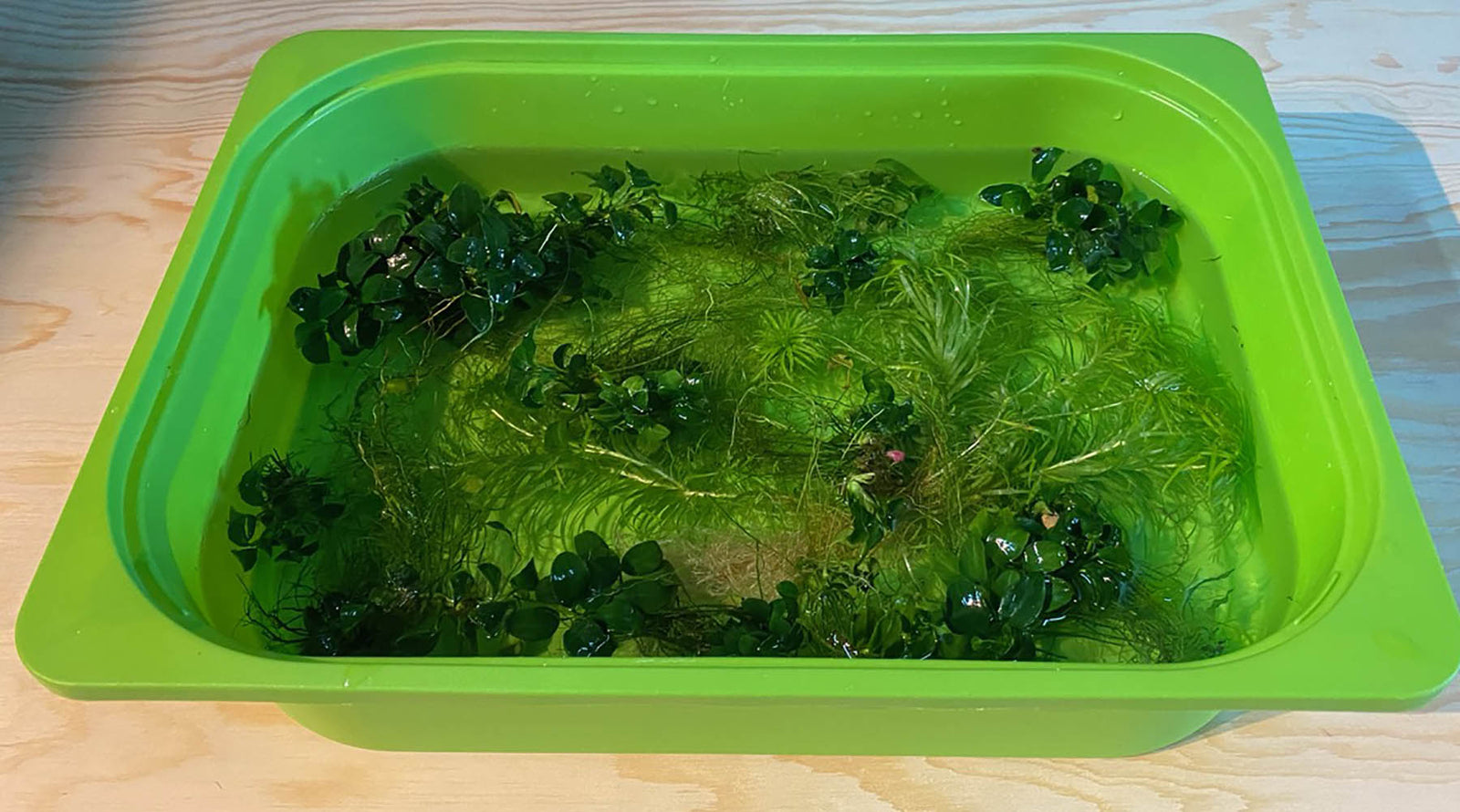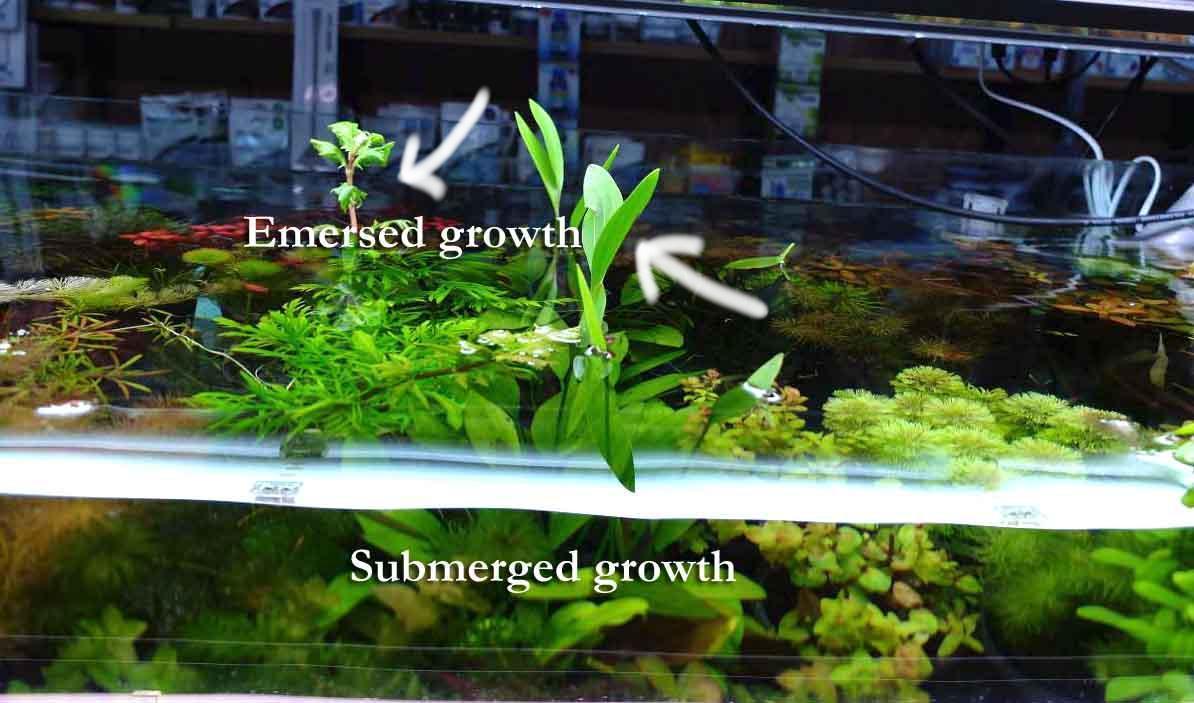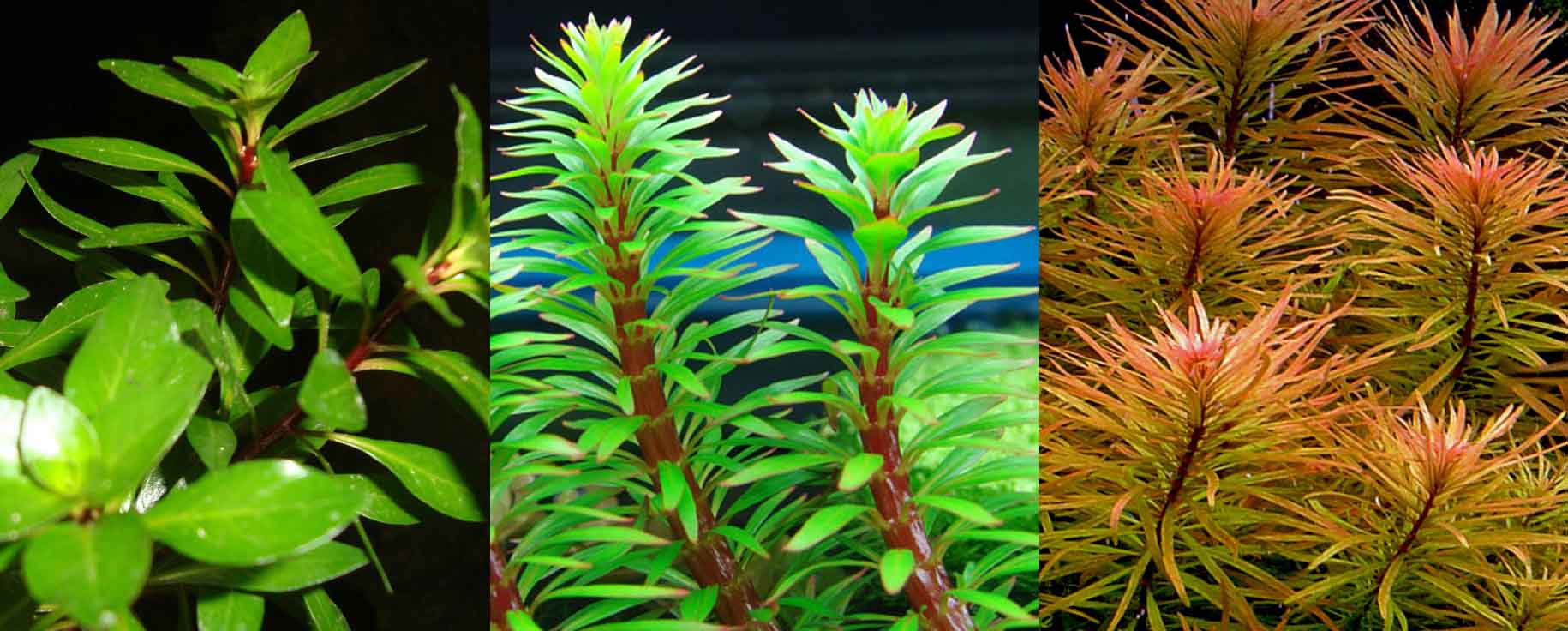
Resetting your planted tank (emptying the tank, replanting / re-scaping) can be a big project, especially for larger tanks.
These 3 hacks may help.
Hack 1- Preserve plants this way
If you plan to empty the tank but re-use your existing plants, the most common mistake is to store them by floating them in a pail of water as shown above.
That is ok for a day or two, but risky as any deterioration can spread quickly and destroy the entire lot. The better technique is to store them, moist (the wetness of baby wet-wipes, without visible water droplets) in closed zipper bags and place them in a cool shaded place (16-24 C) Even the most sensitive plants can last a week this way, and most plants can be kept this way for several weeks.
If you are looking for easy red plants, check out out guide the best red plants here.
Hack 2- Re-use aquasoil this way
Aquasoil can be re-used by mixing it with new aquasoil. A good ratio is 50% new, 50% old. In general, just mix old and new thoroughly. The end mixture will not be as nutrient-rich (or have as much buffering capacity) as 100% new soil, but 50-50 is generally OK. To retain as much beneficial bacteria as possible, add (dechlorinated) water during the mixing so that the mixed soil remains moist at all times.
Hack 3- Accelerate tank (re)cycling this way.
A mature filter with a healthy microbial population is invaluable. It is best not to clean the filter at this point, but to do so 1 or 2 weeks after the tank has been restarted / replanted. This helps to speed up the cycling process tremendously. If your filter is very clogged, you can perform some cleaning but be careful to use either the tank’s water or pre-dechlorinated water so as to minimise damage to the filter’s fragile bacterial colony. It is a small point that makes a great deal of difference. If your filter has a pre-filter, then it is ok to clean the pre-filter while leaving the main filter compartment untouched.
Can I re-use my plants?
In general, the healthy, younger portions of stem plants can be replanted (if you want the same plant species). However if they have grown out of the water and developed emersed leaves, you must be prepared for temporary non- uniformity as the emersed leaves will look very different from new submerged leaves.
Above: Ludwigia inclinata ‘cuba’ in 3 different forms. The leftmost picture shows the emersed form in prolonged dry conditions. The middle picture shows the emersed form if the plant grows above the tank’s water-line. On the right is the submerged aquatic form.
If you are replanting the emersed form in the middle, the emersed leaves will not simply morph into the submerged form. The technique is to let new submerged leaves develop. When they have reached sufficient mass, we then trim away the older emersed portion and replant the now 100% submerged-grown portion.
Can I re-use my substrate if I had algae problems?
Many aquarists worry about retaining algae spores in old substrate. We find that it is generally ineffective to try to avoid algae spores, which can re-enter the tank in countless ways. Fundamentally, if the tank environment is set up to support health plant growth, algae growth is naturally limited / suppressed, in the same way that a thriving lawn makes it difficult for weeds to take hold. Read our full substrate guide here.
What next?
Just stirring up the deeper layers of mature substrate tends to release ammonia and volatile organic substances that can sometimes kill (weak) livestock and trigger algae. In the case of a major revamp, it is important to cycle the tank for at least a couple of days before replanting and adding back livestock. To be extra safe, your ammonia test kit reading should be zero before replanting / adding back livestock. In addition, we recommend these 3 steps:
1. Start dosing a comprehensive fertiliser, such as APT Complete, immediately after planting. Newly planted plants have under-developed roots and depend on nutrition from the water column. Providing it helps them adapt to the new tank environment faster.
2. Change water The 2Hr Way more frequently for the first week or two. It is normal for some plants to melt or for leaves to drop (as a rule, old leaves do not heal. The plant channels energy to growing new leaves that are optimised for the new tank environment).
3. Replant densely. A tank that is at least 70% planted is very resilient to algae, while sparse, new tanks often face an endless string of algae issues.


